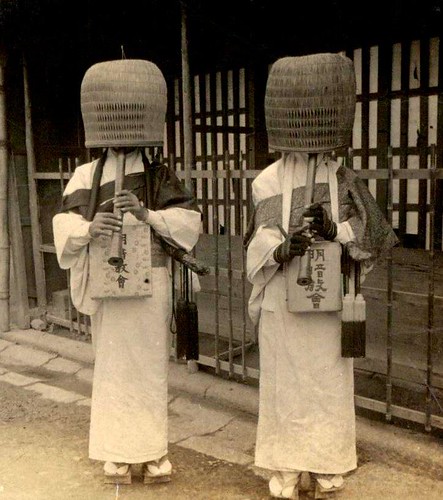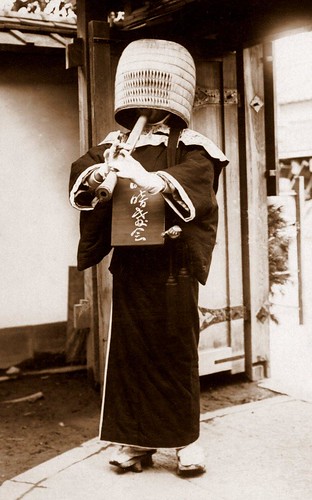From the beginning of the 13th century until the Meiji Restoration, an interesting order of Zen Buddhist pilgrim monks roamed in Japan: komusō 「虚無僧」, the “emptiness monks".
Komusō represented the Fuke Zen Buddhist School, a branch of Buddhism originating from China. Their unusual and distinctive feature, the straw basket worn on the head, symbolized the “absence of ego".
The basket, called tengai, was made of reed or sedge, with small openings on the side, to allow the wearer to see.
As pilgrim monks, they were allowed by the authorities to travel free throughout Japan, a privilege very few people had at the time. This led to the fact that ronins and spies started disguising as komusō, and eventually even the government informers started operating under komusō disguise.
Obviously, this gave komusō a bad reputation and finally lead to the demise of the sect, when the Bakufu government fell and the new Meiji government banned the practice of Fuke Zen.
However, komusō were also well known for beautiful melodies (honkyoku) played at a flute called shakuhachi. This was in fact a Zen meditative practice (suizen - “blowing Zen"), used for enlightenment, but also as a healing practice.
Fortunately, some of these songs were collected during the 18th century by a komusō named Kinko Kurosawa, so even if today the sect no longer exists, the practice of honkyoku is still taught in several schools.
From the honkyoku repertoire, let’s listen Reibo-nagashi:



